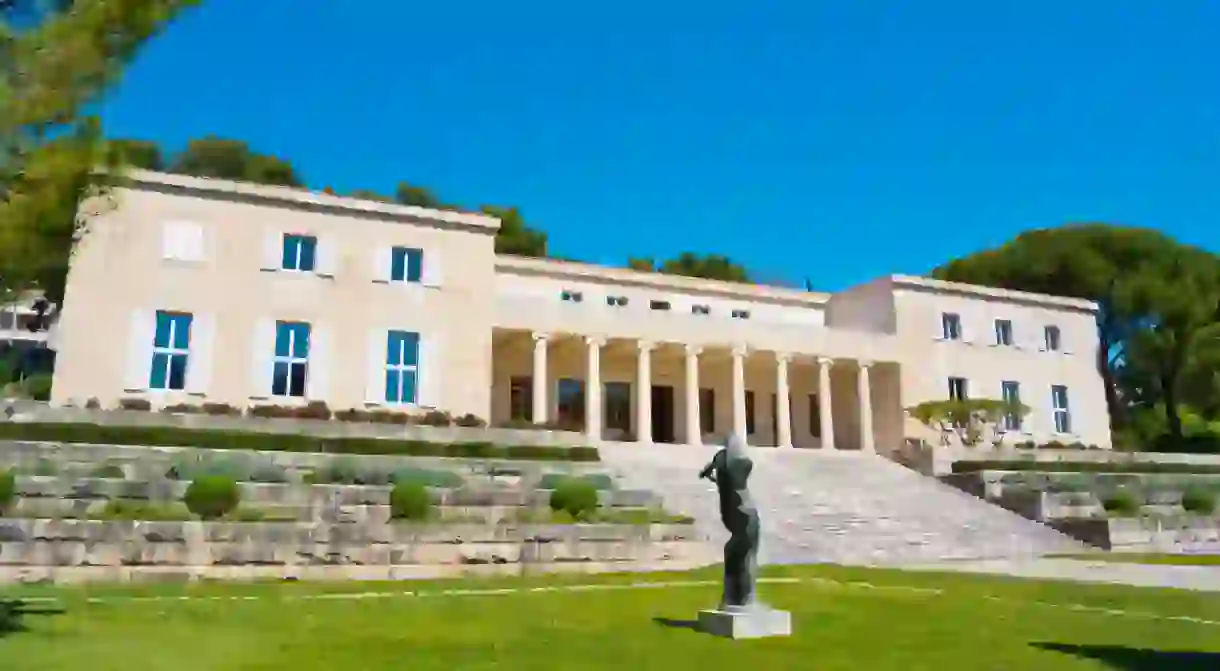The Best Museums and Art Galleries to Visit in Split, Croatia

Coastal air, the history-rich streets of Diocletian’s Palace, excellent local wine – it all comes together to inspire productivity and devotion to art. With this in mind, it is no great surprise to find a world-class spread of museums and galleries in and around Split.
As the second-largest city in Croatia, Split is also home to what is arguably the country’s best selection of museums and galleries outside of Zagreb. This is an artistic city right down to its core, with perfect conditions for creativity and a population that has included some of the nation’s most revered sculptors, painters, poets and composers – making it a great spot to visit for culture-seekers of all kind whether you’re into maritime history, fine art or Game of Thrones.
Ivan Meštrović Gallery
Art Gallery
It would be impossible to talk about art in Croatia without mentioning the genius hands of Ivan Meštrović. The great sculptor learned his trade in Split and the finest collection of his work is found in the city, housed in a museum that was conceived by the great man himself. The villa first functioned as his summer home before developing into a museum in the 1950s. The Ivan Meštrović Gallery is the sort of place that will engage and impress even the most hardened of art cynics, making it an absolute must-visit in Split.
Croatian Maritime Museum
Museum
Museum of Fine Art
Art Gallery, Museum
One of the finest art galleries (pun somewhat intended) on the entire Dalmatian coast, Split’s Museum of Fine Arts is one giant love letter to top drawer art. Home to artworks dating from the 14th century to the current day, the museum tells the tale of Croatia’s greatest artists, from Meštrović and Vidović through to Job, Bukovac and more. The museum is arguably best known, though for its extensive collection of religious icons, including a selection from Russia.
Split Ethnographic Museum
Museum
Split’s Ethnographic Museum is found deep in the heart of Diocletian’s Palace. The building itself is a cultural treasure but the collection within is even better: a gloriously detailed deep dive into Croatia’s cultural traditions with special attention paid to the various trades that have helped the people of Dalmatia survive and thrive over the centuries.
Archaeological Museum
Museum
Split City Museum
Museum
Game of Thrones Museum
Museum
Dalmatia is well and truly embracing Game of Thrones mania. Opened in 2019, the Game of Thrones Museum in Split is located just a short walk from one of the many local filming spots and contains replicas of characters, scenes and more from the hit show. The museum also has a fascinating collection of photographs taken during the filming of the show, breaking the fourth wall on a show built on fantasy and suspension of disbelief.
Emanuel Vidović Gallery
Art Gallery
He might not get the praise and international adulation that Ivan Meštrović does, but the contribution of Emanuel Vidović to art in Croatia cannot be overstated. Vidović is Split’s favourite artistic son, a painter and graphic artist who has long been considered the founding father of modern art in the city, such was his influence. Located in Diocletian’s Palace, the gallery is dedicated to the life and work of a man who was well and truly obsessed with the small-town beauty of this part of the Adriatic.
Museum of Senses
Museum
Split has no shortage of museums and galleries focused on history, art and culture, so it is quite refreshing to be faced with somewhere so unorthodox and eccentric. The Museum of Senses is exactly what you assume it will be, a multi-layered exhibition centre that encourages the visitor to explore the five senses, with occasional queries about common sense along the way. This is a particularly great option for those travelling with youngsters.
Fotoklub Split
Art Gallery
Founded way back in 1911, Fotoklub Split has provided a sanctuary for photographers in the city throughout the tumultuous last century of Croatian history. The gallery hosts frequent exhibitions showcasing local independent work, along with discussions and workshops that open up the art of photography itself.













